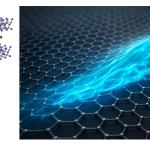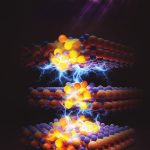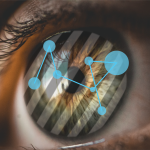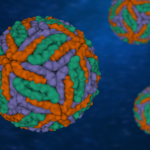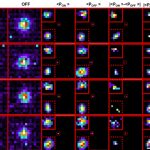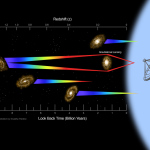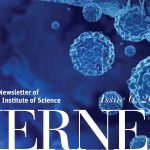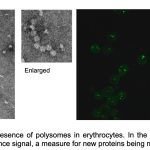Cracking Graphene’s Quantum Code
05 Sep 2025 under FocusFor several decades, a central puzzle in quantum physics has remained unsolved: Could electrons behave like a perfect, frictionless fluid with electrical properties described by a universal quantum number? This unique property of electrons has been extremely difficult to detect in any material so far because of the presence of atomic defects, impurities, and imperfections […]
Unlocking Branch Selectivity Mystery in Photosynthesis
26 Jul 2025 under FocusResearchers at the Indian Institute of Science (IISc) and the California Institute of Technology (Caltech) have solved a long-standing mystery involving the first steps of photosynthesis, the fundamental process in which plants, algae, and some bacteria trap energy from sunlight to produce oxygen and chemical energy. The team has shown why initial electron movements that […]
हाइब्रिड नैनोकण कैंसर कोशिकाओं को लक्षित करते हैं
23 Dec 2024 under Focus Hindi&Hindi stories&Uncategorizedआईआईएससी के वैज्ञानिकों ने कैंसर कोशिकाओं का पता लगाने और उन्हें मारने के लिए एक नया तरीका विकसित किया है, खास तौर पर वे जो ठोस ट्यूमर द्रव्यमान बनाते हैं। एसीएस एप्लाइड नैनो मटेरियल में प्रकाशित एक अध्ययन के अनुसार, उन्होंने सोने और कॉपर सल्फाइड से बने हाइब्रिड नैनोकण बनाए हैं, जो गर्मी का उपयोग […]
Self shocks turn crystal to glass at ultralow power density
07 Nov 2024 under FocusIn breakthrough collaborative work published in Nature, researchers show that a material called indium selenide can “shock” itself to transform from a crystalline to glassy phase using very low power. This transformation lies at the heart of memory storage in devices like CDs and computer RAMs. It consumes a billion times less power than the traditional […]
Neuromorphic Platform Presents Huge Leap Forward in Computing Efficiency
04 Oct 2024 under FocusIn a landmark advancement, researchers at IISc have developed a brain-inspired analog computing platform capable of storing and processing data in an astonishing 16,500 conductance states within a molecular film. Published in the journal Nature, this breakthrough represents a huge step forward over traditional digital computers in which data storage and processing are limited to just […]
टिकाऊ निर्माण के लिए नए रास्ते बनाना
29 Mar 2024 under Focus Hindi&Hindi storiesनिर्माण क्षेत्र आज कई चुनौतियों का सामना कर रहा है। प्राकृतिक रेत तेजी से एक दुर्लभ संसाधन बनती जा रही है– 2050 तक यह खत्म हो सकती है । कार्बन डाइऑक्साइड उत्सर्जन, विशेष रूप से सीमेंट या पकी हुई मिट्टी की ईंटों के निर्माण से, हर साल बढ़ रहा है। निर्माण और विध्वंस ( सीएंडडी) […]
सिंथेटिक एंटीबॉडी ने जानलेवा सांप के विष को बेअसर किया
01 Mar 2024 under Focus Hindi&Hindi storiesसिंथेटिक एंटीबॉडी ने जानलेवा सांप के विष को बेअसर किया स्क्रिप्स रिसर्च इंस्टीट्यूट और भारतीय विज्ञान संस्थान (आईआईएससी) के पारिस्थितिकी विज्ञान केंद्र (ईवीएल/EVL) के इवोल्यूशनरी वेनोमिक्स लैब (ईवीएल) के वैज्ञानिकों ने एक कृत्रिम मानव एंटीबॉडी विकसित की है, जो अत्यधिक ज़हरीले सांपों के एलापिडे परिवार– जिसमें कोबरा, किंग कोबरा, क्रेट और ब्लैक माम्बा आते हैं, […]
Synthetic Antibody Neutralises Deadly Snakebite Toxin
01 Mar 2024 under FocusScientists at the Scripps Research Institute and the Evolutionary Venomics Lab (EVL) at the Centre for Ecological Sciences (CES), Indian Institute of Science (IISc) have developed a synthetic human antibody that can neutralise a potent neurotoxin produced by the Elapidae family of highly toxic snakes, which includes the cobra, king cobra, krait and black mamba. […]
The “Eyes” Have it: Demystifying Gaze and Attention
01 Mar 2024 under FocusTwo new studies from the Centre for Neuroscience (CNS), Indian Institute of Science (IISc) explore how closely attention and eye movements are linked, and unveil how the brain coordinates the two processes. Attention is a unique phenomenon that allows us to focus on a specific object in our visual world, and ignore distractions. When we […]
वर्तमान और भविष्य के SARS-CoV-2 वेरिएंट के लिए थर्मोस्टेबल, व्यापक रूप से सुरक्षात्मक वैक्सीन उम्मीदवार
23 Feb 2024 under Focus Hindi&Hindi storiesकोविड-19 महामारी की शुरुआत से ही, आईआईएससी के मॉलिक्यूलर बायोफिज़िक्स यूनिट (एमबीयू) के प्रोफेसर राघवन वरदाराजन और उनके सहयोगी एक ताप-सहिष्णु वैक्सीन विकसित करने पर काम कर रहे हैं, जो SARS-CoV-2 के विभिन्न प्रकारों – वर्तमान और भविष्य के दोनों प्रकारों से सुरक्षा प्रदान कर सके। एनपीजे वैक्सीन्स में प्रकाशित एक अध्ययन में, वे एक […]
बिजली के बिना जलापूर्ति
23 Dec 2023 under Focus Hindi&Hindi storiesभारत में सिंचाई की उपलब्धता एक बड़ी समस्या है। भारतीय विज्ञान संस्थान (आईआईएससी) के सेंटर फॉर सस्टेनेबल टेक्नोलॉजीज (सीएसटी) में एसोसिएट प्रोफेसर पुनीत सिंह पिछले 10 वर्षों से छत्तीसगढ़ में सिंचाई की इस कमी को दूर करने के समाधान पर काम कर रहे हैं। छत्तीसगढ़ को गंगा, गोदावरी और महानदी बेसिन से नदी जल की […]
पैरासाइटोइड ततैया की शिकार रणनीतियाँ
15 Dec 2023 under Features Hindi&Hindi storiesजीवित प्राणियों की अविश्वसनीय परस्पर संबद्धता, जो उनमें से प्रत्येक के अस्तित्व पर निर्भर करती है, वही है जिसका पता लगाना सस्क्यवन नोहुइस को पसंद है। आईआईएससी में सेंटर फॉर इकोलॉजिकल साइंसेज में एसोसिएट प्रोफेसर सस्क्या ने बोरियल फिनलैंड से लेकर गर्म, उष्णकटिबंधीय भारत तक विभिन्न क्षेत्रों में कीड़ों की व्यक्तिगत और जनसंख्या-स्तर की अंतःक्रिया […]
एक विषैली राह पर चलना
02 Nov 2023 under Features&Features Hindi&Hindi storiesकार्तिक सुनागर की प्रयोगशाला का उद्देश्य सर्पदंश के उपचार की समझ और प्रभावशीलता को बढ़ाना है। 2022 की एक ठंडी रात में, कार्तिक सुनगर और उनकी टीम थार रेगिस्तान में सिंध क्रेट की तलाश कर रहे थे, जो देश के सबसे जहरीले सांपों में से एक है। “हम आधी रात को उसे ढूँढ रहे थे, […]
पूर्णतः स्वदेशी गैलियम नाइट्राइड पावर स्विच
23 Sep 2023 under Uncategorizedआईआईएससी के शोधकर्ताओं ने एक पूर्णतया स्वदेशी गैलियम नाइट्राइड (GaN) पावर स्विच विकसित किया है, जिसका उपयोग इलेक्ट्रिक वाहनों और लैपटॉप के लिए पावर कन्वर्टर्स जैसी प्रणालियों के साथ-साथ वायरलेस संचार में भी किया जा सकता है। स्विच के निर्माण की पूरी प्रक्रिया – सामग्री विकास से लेकर उपकरण निर्माण और पैकेजिंग तक – नैनो […]
वायरस: सिर्फ़ खलनायक नहीं
04 Aug 2023 under Features&Features Hindi&Hindi storiesबड़े पैमाने पर हत्यारों के रूप में चित्रित किए जाने के बावजूद, इन सूक्ष्म रूपों की लाभकारी भूमिकाएं भी हैं कोविड-19 महामारी के वास्तविकता बनने से एक दशक पहले, 2011 की फिल्म कॉन्टैगियन ने एक कथा प्रस्तुत की थी, जिसमें तेजी से फैलने वाले, अत्यधिक संक्रामक वायरस के परिणामों पर विचार किया गया था, जो […]
फ्लोरोजेनिक जांच से अल्जाइमर के प्रारंभिक चरण से जुड़े एंजाइम का पता लगाया जाएगा
23 Jul 2023 under Uncategorizedएसिटाइलकोलिनेस्टरेज़ की विशिष्ट पहचान के लिए एक नई फ्लोरोजेनिक जांच को डिजाइन और संश्लेषित किया गया है। यह एक महत्वपूर्ण एंजाइम है जो न्यूरोट्रांसमीटर एसिटाइलकोलाइन को हाइड्रोलाइज करता है और अल्जाइमर के बढ़ाव से जुड़ा हुआ है। (छवि: ताबिश इकबाल) अल्जाइमर रोग, एक न्यूरोडीजेनेरेटिव विकार है, जिसके परिणामस्वरूप 60 वर्ष की आयु के बाद कई […]
Cracking the Structure of a Crucial Neural Transport Protein
13 Jul 2023 under HighlightsUsing Cryo-EM, a powerful microscopy technique, researchers at IISc and collaborators have decoded the molecular architecture of a transporter protein controlling the movement of a key neurotransmitter. Neurons or nerve cells communicate by releasing chemical signals called neurotransmitters. Each neurotransmitter can activate specific sets of proteins called receptors that in turn either excite or inhibit […]
AI असिस्टेंट या Ace स्टूडेंट?
30 Jun 2023 under Features Hindi&Hindi storiesजब आईआईएससी के कंप्यूटर विज्ञान और स्वचालन विभाग (सीएसए) में सहायक प्रोफेसर अरिंदम खान ने रैंडमाइज्ड एल्गोरिदम पर अपने पाठ्यक्रम के लिए एक परीक्षा की व्यवस्था की, तो वह यह देखने के लिए उत्सुक थे कि ChatGPT – AI समुदाय में तरंगें बनाने वाला चैटबॉट – कितना अच्छा प्रदर्शन करेगा। उन्होंने ChatGPT को संकेत के […]
Computational analysis shows how dengue virus evolved in India
08 Jun 2023 under FocusA multi-institutional study on dengue led by researchers at IISc shows how the virus causing the disease has evolved dramatically over the last few decades in the Indian subcontinent. Cases of dengue – a mosquito-borne viral disease – have steadily increased in the last 50 years, predominantly in the South East Asian counties. And yet, there are […]
Neuromorphic Camera and Machine Learning aid Nanoscopic Imaging
21 Feb 2023 under FocusIn a new study, researchers at IISc show how a brain-inspired image sensor can go beyond the diffraction limit of light to detect miniscule objects such as cellular components or nanoparticles invisible to current microscopes. Their novel technique, which combines optical microscopy with a neuromorphic camera and machine learning algorithms, presents a major step forward […]
Record-breaking Radio Signal Detected from Distant Galaxy
16 Jan 2023 under FocusAstronomers from McGill University in Canada and IISc have used data from the Giant Metrewave Radio Telescope (GMRT) in Pune to detect a radio signal originating from atomic hydrogen in an extremely distant galaxy. The astronomical distance over which such a signal has been picked up is the largest so far by a large margin. […]
Kernel Issue 6, 2022
29 Dec 2022 under NewsletterPlasma‐activated-water to Combat Multidrug‐resistant Pathogens
29 Dec 2022 under HighlightsResearchers from IISc have demonstrated the generation of plasma-activated water containing reactive oxygen and nitrogen species such as H2O2, NO2−, and NO3− in high strengths (hs-PAW). This hs-PAW was found to be capable of inactivating even hypervirulent multidrug resistant pathogens. The study, led by Lakshminarayana N Rao and Dipshikha Chakravortty, also shows that plasma-activated water […]
Protein synthesis in cells without a nucleus
29 Dec 2022 under HighlightsTranslation, or protein synthesis, is the final step in the central dogma of molecular biology, where an mRNA carrying information from DNA synthesises proteins. It is an indispensable process that is performed by almost all living cells. An exception where translation was believed to be absent is red blood cells (RBCs). Now, a team led […]
Enhanced water evaporation from nanoporous graphene
29 Dec 2022 under HighlightsWith growing global water stress, there is a pressing need to develop potable water technologies with a lower carbon footprint. Enhancing the kinetics of liquid–vapour transition from nanoscale confinements is an attractive strategy for developing evaporation and separation applications. The ultimate confinement limit for evaporation is an atom-thick interface hosting Angstrom-scale nanopores. Researchers led by […]

